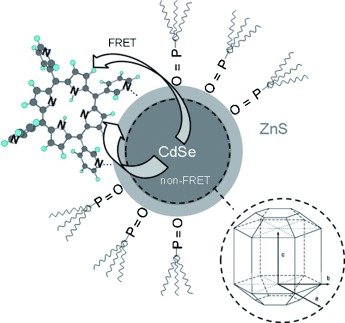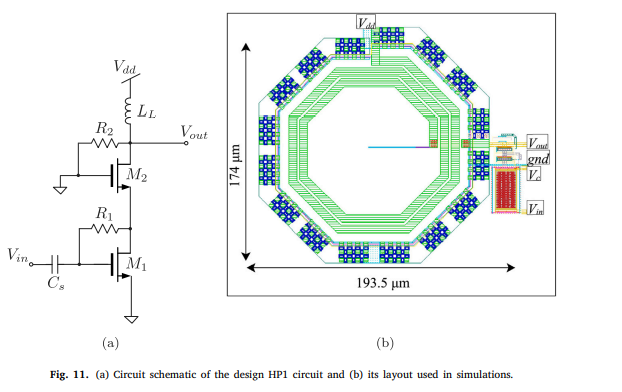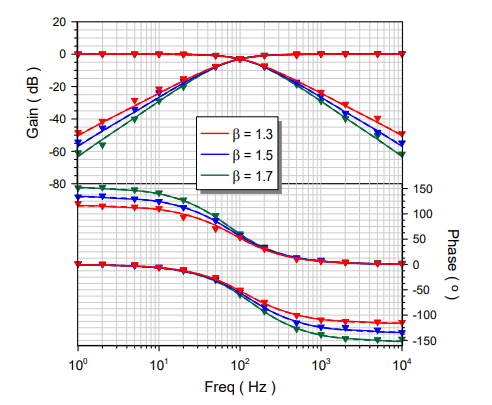Breadcrumb

Formation principles and ligand dynamics of nanoassemblies of CdSe quantum dots and functionalised dye molecules
Functional dye molecules, such as porphyrins, attached to CdSe quantum dots (QDs) through anchoring meso-pyridyl substituents, form quasi-stable nanoassemblies. This fact results in photoluminescence (PL) quenching of the QDs both due to Förster resonance energy transfer (FRET) and the formation of non-radiative surface states under conditions of quantum confinement (non-FRET). The formation process is in competition with the ligand dynamics. At least two timescales are found for the formation of the assemblies: 1) one faster than 60 s attributed to saturation of empty attachment sites and 2) one slower than 600 s, which is attributed to a reorganisation of the tri-n-octylphosphine oxide (TOPO) ligand shell. Finally, this process results in almost complete exchange of the TOPO shell by porphyrin dye molecules. Following a Stern-Volmer analysis, we established a microscopic description of PL quenching and assembly formation. Based on this formalism, we determined the equilibrium constant for assembly formation between QDs and the pyridyl-functionalised dye molecules to be ${K \approx 105-107 }$ M-1, which is several orders of magnitude larger than that of the TOPO ligands. Our results give additional insights into the non-FRET PL quenching processes involved and show that the QD surface is inhomogeneous with respect to the involved attachment and detachment processes. In comparison with other methods, such as NMR spectroscopy, the advantage of our approach is that ligand dynamics can be investigated at extremely low ratios of dye molecules to QDs. Quenching the glow! The size-dependent photoluminescence quenching of semiconductor quantum dots by functionalised dye molecules in solution is analysed with respect to Förster resonance energy transfer (FRET) and non-FRET contributions (see picture). By this approach, assembly formation and ligand dynamics can be studied at extremely low concentrations of quantum dots and dye molecules. Copyright © 2012 WILEY-VCH Verlag GmbH & Co. KGaA, Weinheim.



